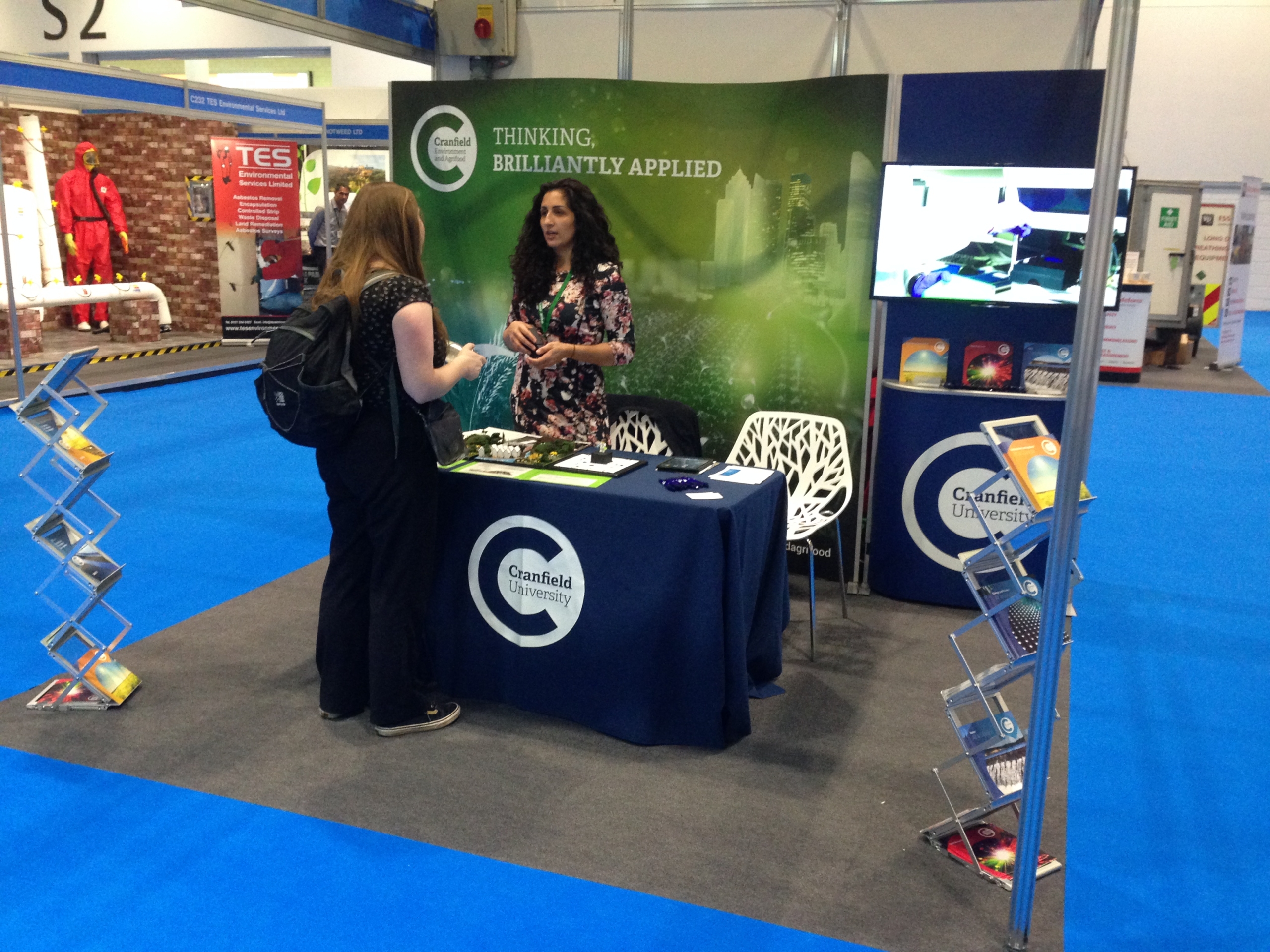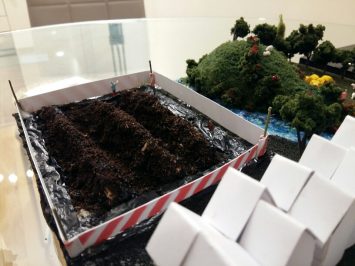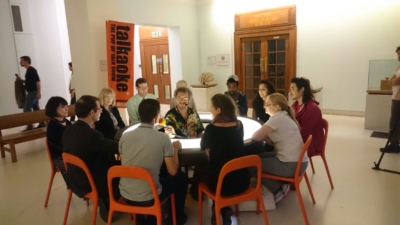Showcasing my Cranfield research at outreach events
24/10/2016

More than 200 years of industrialisation has left a legacy of contaminated sites across Europe. According to the European Environment Agency, some three million sites in our continent alone are affected by potentially polluting activities, of which about 500,000 are in need of remediation (reversing or stopping environmental damage).
Contaminated land is a growing concern as it poses threats for the environment and to human health. But how can this problem be effectively communicated to a wider audience?
As a Marie Curie Early Stage Researcher in Environmental Science at Cranfield, my research project is part of a training network funded by the European Union called REMEDIATE. In this project, my research focuses on environmental chemistry and toxicological approaches to site assessments.
To help people understand contaminated land and its impact – not a simple task! – I decided to take part in two outreach events (Science Uncovered 2016, and more recently the Contamination Expo Series 2016).
Science Uncovered, part of the European Researchers’ Night, was a free event at the fascinating National History Museum in London with the whole event attracting as many as 30,000 visitors.
The European Researchers’ Night, which received funding from the EU’s Horizon 2020 programme, took part simultaneously across Europe as more than 200 leading museums opened their doors to the public. Hundreds of scientists presented their work and explained how their research is shaping the future.
 Presenting my work on contaminated land and remediation at the EU corner, I had a miniature model which showed potential receptor-contaminant-pathway linkage and explained some of the remediation strategies. I had the opportunity to engage with a wide audience from young kids to teenagers, through to adults and, of course, other scientists. I also provided some free scientific magazines, from the Royal Society of Chemistry (RSC), along with the Chartered Institution of Water and Environmental Management (CIWEM), as well as a copy of an article I wrote for Labiotech.eu that, perhaps surprisingly, people were very happy to take and read!
Presenting my work on contaminated land and remediation at the EU corner, I had a miniature model which showed potential receptor-contaminant-pathway linkage and explained some of the remediation strategies. I had the opportunity to engage with a wide audience from young kids to teenagers, through to adults and, of course, other scientists. I also provided some free scientific magazines, from the Royal Society of Chemistry (RSC), along with the Chartered Institution of Water and Environmental Management (CIWEM), as well as a copy of an article I wrote for Labiotech.eu that, perhaps surprisingly, people were very happy to take and read!
I also participated in the ‘talkaoke’; this is basically a big, round table with a hole in the middle (like a doughnut!). The public and a couple of scientists at a time come and sit around the edge, while a trained host / facilitator sits in the middle and gets the conversation flowing in a relaxed, interactive way.
 I was glad to see so many people curious about science; I’d recommend more Cranfield researchers taking part next year as it’s an absolutely fantastic event. I’d also like to acknowledge the help provided by Camilla Tham and Alastair Hendry, who are known as ‘science communicators’, from the Natural History Museum.
I was glad to see so many people curious about science; I’d recommend more Cranfield researchers taking part next year as it’s an absolutely fantastic event. I’d also like to acknowledge the help provided by Camilla Tham and Alastair Hendry, who are known as ‘science communicators’, from the Natural History Museum.
Another more recent experience, also in London but at the ExCeL exhibition centre this time, was the Contamination Expo Series 2016. This was the first event of its kind and brought together world-class experts in the remediation sector. I attended the first of the two days and it was a valuable experience, listening to great talks and world-class speakers. Presentations were informative, very engaging and helpful; I appreciated that they allowed enough time for some thoughtful Q&A sessions and discussion.
This successful event was an amazing opportunity for me to showcase my research on the Cranfield stand, as well as meet people working in related areas of environmental science, geochemistry, geoscience and other disciplines. This proved to be a good networking opportunity and generated a lot of ideas about how to continue to expand my skills and my professional qualifications.
Categories & Tags:
Leave a comment on this post:
You might also like…
Automotive Engineering: From student to hypercar innovation at Rimac
We sat down with recent graduate Thomas Perrin, to discuss how his year on the MSc in Automotive Engineering at Cranfield University propelled him from the lecture hall directly into the ...
What this year at Cranfield really meant to me
Every Cranfield journey is unique. In this alumni reflection, Zachea Scicluna shares what her year at Cranfield truly meant, from facing uncertainty to gaining hands-on experience in industry-backed projects. I’ve been reflecting (and delaying) ...
Preparing for assignments and exams?
Sorry! We know it seems a bit mean to mention the exams in January rather than looking forward to the break before it! However, we know many of you will be thinking about your forthcoming ...
Screening for FTSE 100 companies on Bloomberg
So you’re researching an index and need some data on its constituent companies? Bloomberg’s Equity Screening tool makes light work of this, not just for the FTSE, but for indices, exchanges and sectors worldwide. Type EQS ...
Accelerating my future: How Cranfield put me on the fast track to automotive safety innovation
Hello! I’m Michaela Kaiser, and I’m thrilled to share my journey studying abroad. I’m from Calgary, Canada, and I recently graduated from Cranfield’s MSc Automotive Engineering course. My path to Cranfield ...
From Myanmar to Cranfield: My path to Renewable Energy
As someone who is passionate about sustainability, my career goal is to build a path in the renewable energy sector. My aspirations comes from the benefits of developing sustainable energy sources and ensuring energy ...






